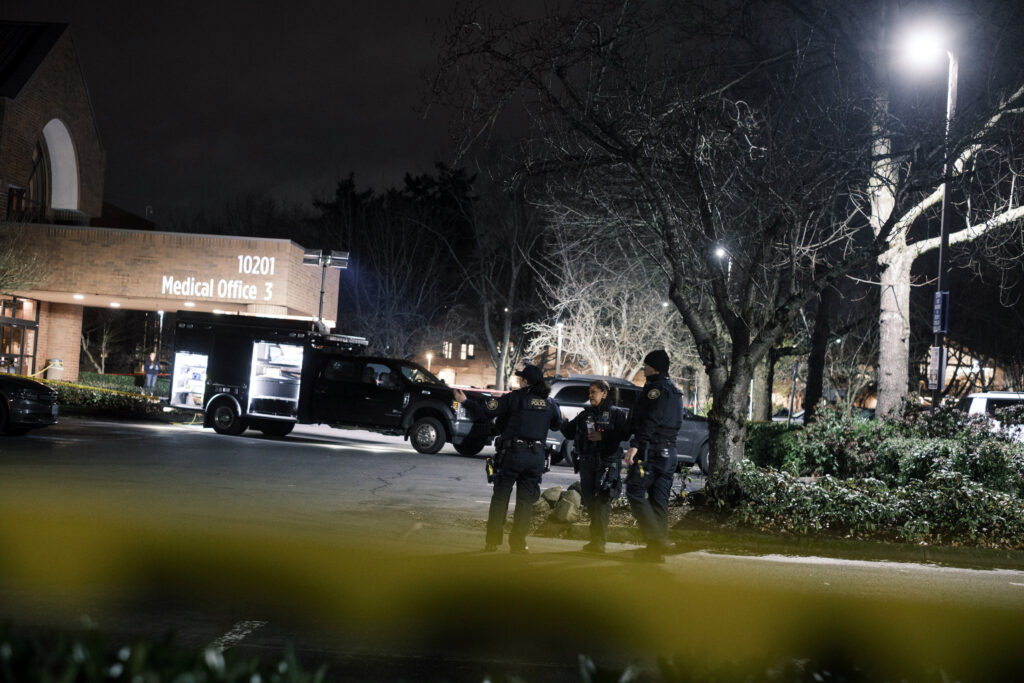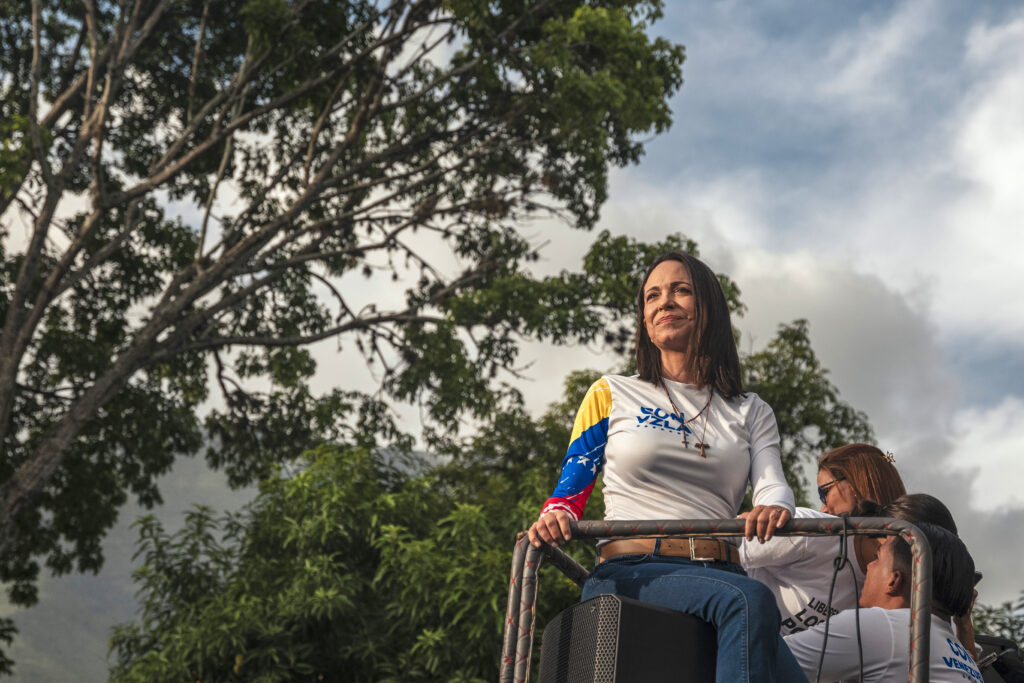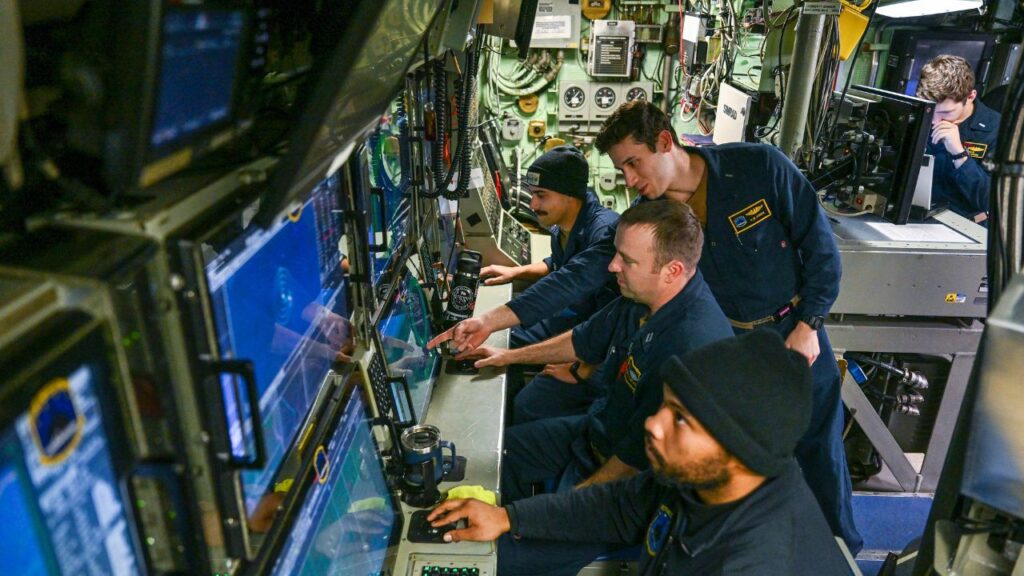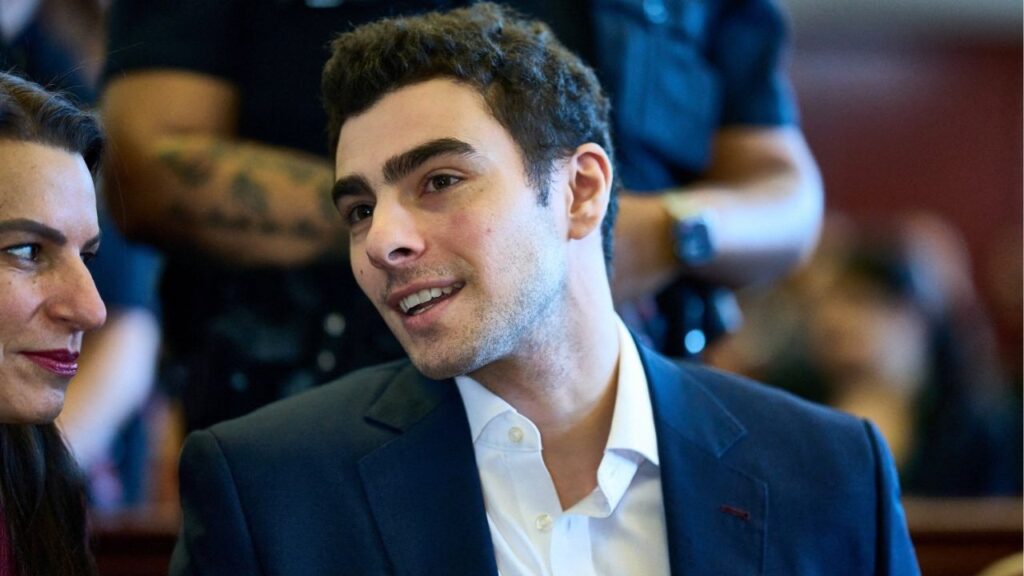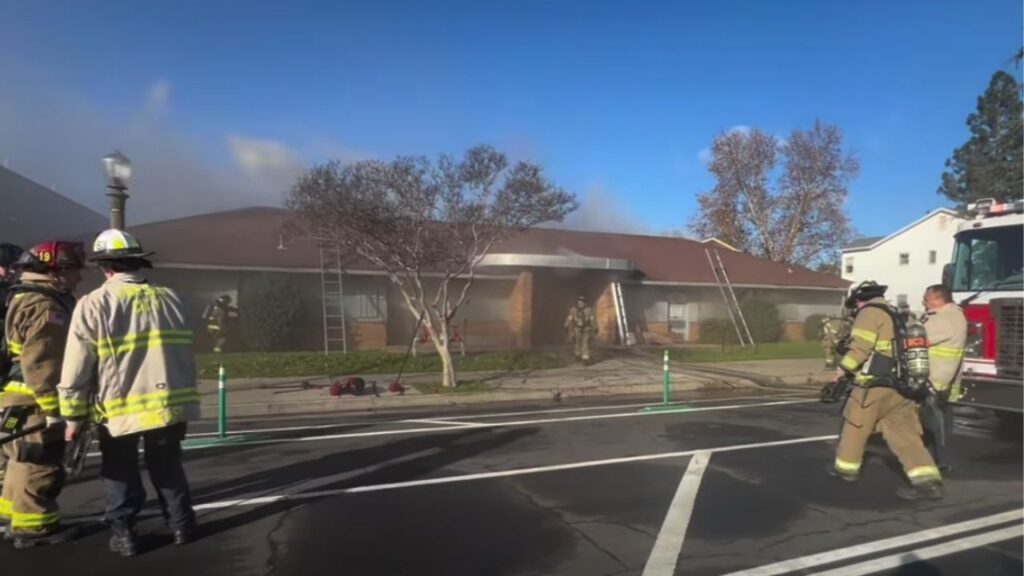The Center for Advanced Research and Technology specializes in project-based learning. (GV Wire Composite/Paul Marshall)

- CART teaches Fresno and Clovis students through project-based learning.
- The center, which has been operating for 24 years, is the result of a joint powers agreement between Fresno and Clovis unified school districts.
- Teachers work in teams with students in labs that focus on specific pathways such as biomedicine and law and policy.
Share
|
Getting your Trinity Audio player ready...
|
One of the Fresno area’s biggest educational success stories is tucked away in a former pump factory just south of Sierra Vista Mall in Clovis.
The Center for Advanced Research and Technology sounds like it’s something out of Silicon Valley rather than a career technical education option that has introduced Fresno and Clovis unified students to project-based learning for a quarter century.
Students attending CART — there are about 1,450 yearly — attend their home high school for half a day, either morning or afternoon. The other half is spent at CART, where juniors and seniors can enroll in 13 different pathways. The majority have a science component such as engineering, manufacturing, and robotics; biomedicine; or psychology and human behavior.
There’s a lottery for admission, with about 2,300 applications vying for 1,000 spaces. The remaining seats go to returning seniors who have first priority. Students seeking admission aren’t judged solely on their grade-point averages but also on other factors: Do they have the course credits they need to be on track to graduate? Do they have good attendance?
The center, which has a $3.4 million budget for the upcoming 2024-25 school year, is designed to mirror the real world of courtrooms, laboratories, hospitals, and web design firms. Classes are “labs” that are outfitted with professional furniture instead of what you’d normally find in a high school; the center on occasion schedules “dress-up” days, when students wear clothing appropriate to their field (think business attire or hospital scrubs).

There’s no principal — the head is Rick Watson, whose title is CEO. Staci Bynum, one of CART’s original teachers, is second in command and is CART’s dean of curriculum and instruction.
It has its own fundraising foundation and a Board of Trustees composed of the two districts’ superintendents, a trustee from each district, a private sector representative appointed by each district, and an appointee from the Fresno Business Council.
In CART’s environment, culture is key. Students learn early how to greet visitors by looking them in the eye and saying hello, how to be prepared to answer questions about what they’re working on, and how to team up with others, no matter their background is or what high school or part of town they come from.
Different Ways to Gauge Success
How do they measure success at CART? There’s no “dashboard” to show student academic performance on standardized tests, student engagement, or graduation rates that are common at comprehensive high schools.
Due to privacy restrictions, there’s no way to know other than through anecdotal evidence what percentage of CART alumni go on to jobs in their field of study.
So success is measured in other ways: In the percentage of juniors (85% to 88%) who opt to return to CART as seniors; in the number of visits from educators from all over the world who want to see the CART model in action; in the high scores of 11th graders on the state English proficiency assessments.
Todd Cook, chairman of CART’s board of trustees and a longtime supporter, says that standardized testing shows CART students score higher than their peers at their home schools.
Cooperation Is Key

“I believe that the only way we have to help ourselves is economic development through education. We’ve got to keep our best and brightest here, we’ve got to train them and get them ready. That’s why I’m so passionate about education.” — Todd Cook, CART Board of Trustees Chairman
Cook says the center’s success also can be measured in the continued cooperation over more than two decades of two of California’s largest urban school districts to provide a unique educational opportunity for thousands of high schoolers.
It was created through a joint powers agreement between the Fresno and Clovis districts. Because CART teachers come from two different school districts, it needed an exemption of the state school funding law that requires students to be taught by a district teacher for the district to collect the state’s average daily attendance funding for that student. The districts’ portions of ADA money, which pay for school expenses such as salaries and benefits, are funneled through the districts into CART’s operating budget.
A state law authored by Assemblymember Dr. Joaquin Arambula in 2017 made the exemption permanent.
Cook says that CART is particularly important as an education option in a region with historically low levels of income and academic performance, little access to health care, and high rates of crime. The center provides students an opportunity to learn skills that will land them good jobs here, and “to prepare them for life in the real world.”
“When you look at all the metrics, we’re in an impoverished area,” he says. “I believe that the only way we have to help ourselves is economic development through education. We’ve got to keep our best and brightest here, we’ve got to train them and get them ready. That’s why I’m so passionate about education.”
CART Fills a Missing Educational Link

“CART continues to have great enrollment, kids who love it and come out and say, ‘my life would be different if I hadn’t gone to CART.’ So I think that tells you it’s not about the pathways. It’s really about the integrated learning.” — Kurt Madden, CEO, Career Nexus
Kurt Madden has been a longtime observer of CART, both as an educator and as a parent of two CART graduates. Madden, now CEO with Career Nexus, a local nonprofit connecting young workers with local business internships, and CFO of the Fresno Business Council, previously worked for Fresno Unified and attended many CART board meetings as the stand-in for then-Superintendent Michael Hanson.
CART’s start-up came at a time when many schools had turned away from vocational education options and toward preparing all students for college. The goal was to achieve equity for students, who in the past might have been tracked due to their race or ethnicity to vocational training or college prep. But the intention of achieving equity had the unintended consequence of cutting off access to vocational options that many students wanted and needed, Madden said.
The school provided pathway options that had been missing and generated interest from students looking for options as well as support from local businesses.
CART also may have been part of the reason why the relationship between Fresno and Clovis districts, which was rocky a quarter century ago, has improved significantly since, Madden said. Both districts agreed to participate in the unique experiment of partnering in the charter school, sharing the risks as well as the rewards.
CART faced a few challenges along the way, such as the turnover of principal/CEOs, but the school’s deeply entrenched culture provided the foundation and bridge between leaders, he said.
And, once the educational pendulum had swung back to include vocational options at comprehensive high schools, some thought that might mean an end to CART, Madden said.
The school’s specialized curriculum — teaming teacher in labs where students learn subject matter while getting English and math lessons that are geared specifically to the subject matter — is what sets CART apart from schools with pathways, he said.
“CART continues to have great enrollment, kids who love it and come out and say, ‘my life would be different if I hadn’t gone to CART.’ So I think that tells you it’s not about the pathways. It’s really about the integrated learning.”
Yes, He Might Someday Be Called Dr. Asparin

“But just like how you’re thrown into college with a bunch of random people you’ve never met before in a different community, CART kind of did that earlier on in your junior year. … It was just a fresh start and a chance to really become the type of person that I wanted to be in high school.” — Aaron “AJ” Asparin, CART alum
CART’s success stories include Aaron “AJ” Asparin, who graduated summa cum laude from Fresno State in May with a major in biochemistry and minor in French. CART was one of his essay topics when he applied for and won admission to the Smittcamp Family Honors College at Fresno State.
He says his two years at CART wrought a veritable transformation of a teenage introvert who was not engaging in extra-curriculars to an outgoing student who was elected vice president of the Filipino and French clubs and joined other clubs at his home school, Clovis East.
The school gives students a chance to blossom in ways that they might not otherwise, says Asparin, who served as one of the center’s student ambassadors.
“CART was really a pre-college experience,” he says. “At your home school you’re kind of stuck there for four years having to be kind of the same person that you were freshman year, you kind of carry on that legacy of what you were because you’re around the same exact people.
“But just like how you’re thrown into college with a bunch of random people you’ve never met before in a different community, CART kind of did that earlier on in your junior year. … It was just a fresh start and a chance to really become the type of person that I wanted to be in high school.”
And through his experience in the biomedicine pathway, Asparin says he determined that his initial goal of becoming a pharmacist (he jokes about how he envisioned dispensing aspirin as Dr. Asparin) was replaced with a new goal of becoming a doctor.
“It was actually there that I found out that pharmacy would have been a complete waste of my time. Not because I’m not interested in pharmacy, but I’m interested in medicine more than pharmacy.”
An Abundance of Opportunity
Asparin says he got the opportunity to shadow doctors, something that’s highly unusual for high schoolers and that’s valuable for students who are hoping to get into medical school.
His older brother, also a CART graduate, went through the multimedia lab but today is preparing to enter graduate school for an advanced degree in public health.
CART isn’t just for the top students, Asparin says, and it can help many students acquire the so-called “soft skills” that they will need to be successful in college and beyond — including working on a team, developing projects, meeting deadlines, and communicating effectively.
He’s working now as a medical scribe, saving up money and preparing to take the MCATS — the test that determines whether you get into medical school — and hopes to be entering medical school in the summer of 2026. His top choices are the UCSF Fresno SJV PRIME program, which has been training classes of Valley-bred medical students for several years now, Johns Hopkins University in Maryland, and Stanford University.
His goals include expanding his command of languages — in addition to English, Fresno, and the Philippine regional language Bisaya, he’s starting to learn Mandarin. His goal is to be a polyglot who will be equipped to speak directly to his patients someday.
School Helped Her Meet Her Goals

Breana Uhrig Castonguay was a member of CART’s inaugural class who still stays in touch with her teachers and remembers clearly the opportunities she would not have had if she’d been fulltime at Buchanan High. Castonguay was drawn to the biomedicine pathway — at the time her goal was to become a doctor — and she was eager to see open-heart surgery.
“That’s so amazing, that they saw something that I was passionate about,” says Castonguay, now an HIV/AIDS researcher. “And they were like, how do we make this happen? And it wasn’t with the surgeon, it was with the perfusionist. That’s the person who’s in charge of keeping the heart, basically becomes the heart, during open heart surgery. … I would have never even known about perfusion and what that is. I learned so much.”
As a 16-year-old, Castonguay said, she was writing an application for a $50,000 California Endowment grant to pay for outreach events at Clark Intermediate School.
“We called it DOT — Depression Outreach for Teens,” she says. “It’s just like phenomenal — when I think back like that, that we were allowed to do that. I mean, it was so cool.”
After high school graduation Castonguay enrolled at UC Davis and earned her bachelor’s degree — by then she had decided to aim for a career in public health research. She then got her master’s at George Washington University in Washington, D.C., before starting her public service work at the National Institutes of Health. (And yes, she is on a first-name basis with the NIH’s best-known official, Dr. Anthony Fauci).
The grant-writing experience she got at CART is a skill she uses today. Castonguay says she’s writing a grant for her dissertation as a Ph.D. student at George Washington. She’s a T 32 fellow with funding for her graduate program and also is the manager of a large NIH-funded study and is in charge of collecting and organizing data and writing up the results.
CART’s Student Population Is Diverse

“Our students, probably 80-plus percent of them, are bused here. That’s not necessarily attractive to a student if they can stay at their home school and take a similar career pathway. But what we believe the students thrive on here is the culture.” — CART CEO Rick Watson
CART isn’t just for valedictorians like Asparin and Castonguay, Watson says.
School counselors, who work closely with CART staffers, sometimes identify students who may be struggling in their comprehensive high school and need alternatives.
“We want to be able to provide an opportunity for students who are … not performing up to their capacity,” he says. “Because a comprehensive school environment doesn’t work for them. They don’t connect with anybody at their home school. They’re being bullied or they’re being judged for whatever their choices might be. A lot of times, those students come here and find that the environment is much more conducive to their success.”
The unstructured environment places more responsibility on students to complete their work and work in teams with other students, so students who need more structure might not find CART a good fit, Watson says.
Currently about 56% of CART’s students come from Clovis Unified and the remaining 44% are from Fresno Unified.
“We’ve really done a much better job over I’d say the last five to eight years equaling that out because we do an extremely dedicated, recruitment process in Fresno Unified,” Watson says.” It’s hard to compete with the amazing CTE programs that our home schools provide their students.
“And the fact is that our students, probably 80-plus percent of them, are bused here. That’s not necessarily attractive to a student if they can stay at their home school and take a similar career pathway. But what we believe the students thrive on here is the culture.”
In addition to dual enrollment credit, CART students also earn certifications in Google UX design, web applications, and Adobe Photoshop and Premiere, Watson says.
Teachers Are Important Part of Culture
CART’s unique culture is a combination of factors: Students who come from different neighborhoods and high schools across Fresno and Clovis find commonality in their projects and shared interests. The center puts a spotlight early on into team building and coaching. The team-teaching approach gives teachers and students more opportunity for bonding.
The 34 teachers — half from Fresno, half from Clovis — are hired by their respective school districts through their established hiring practices. CART assembles a panel to review candidates, and Watson and Bynum have the final word as to hires.

They’re looking for candidates with certain characteristics as well as subject knowledge.
“It’s not traditional where you get your own classroom and you’re in your own environment and you get to make those decisions yourself,” Watson says. “You make decisions as a team, and getting that compatibility right is probably the hardest thing that we do in our hiring process.
“But once people are on board, they find this to be a wonderful environment because you do get to work with teachers in a collaborative environment. You have some autonomy over your curriculum and how you teach it, because everything has to be taught differently. You can’t teach any of the courses here traditionally. So a lot of folks find that to be very encouraging, and you don’t get dictated to as much as you do in a traditional environment.”
For the most part, integrating teachers from two districts into a single staff has been pretty smooth, but there have been hiccups, such as when high schools changed schedules for later start times, and when COVID restrictions were lifted sooner by Clovis Unified than by Fresno Unified.
And then there was that potential FUSD teachers’ strike last fall. “So right now we have two labs that are pure Fresno Unified teachers who would have been on strike and we would have had to have figure out how to cover those courses,” he says.
Having a board with representatives from both districts has helped school officials navigate some of the challenges, Watson says.
Faculty Tends to Stay
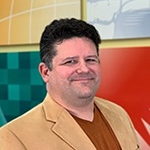
“There’s no course plans or guidebook that you can go out and buy. What we teach is unique.” — CART teacher Rylie Hilscher
CART teachers have a tendency to stick around, Bynum says. For some, teaching at CART is their second career after working in a field and then getting their teaching credential.
Other faculty members, such as one who teaches graphic design and another who teaches engineering, are still working professionally outside the classroom, Watson says: “It’s a great opportunity to stay connected with your field, which only benefits our kids.”
The faculty includes Rylie Hilscher, who has been a CART teacher since the center opened 24 years ago, and Alex Wlaschin, a CART alum who now teaches psychology and just finished her eighth year.
Hilscher taught English for 14 years in the biomedicine lab and then switched to the law and policy lab.
CART teachers work in teams, which means they need to be aware of each other’s lesson plans. They get to develop their own curriculum — “There’s no course plans or guidebook that you can go out and buy. What we teach is unique,” Hilscher says — and flexibility is important. Hilsher says his English lessons build on what the students are learning as they work on their projects, so he tailors their assignments to provide more context in support of the ideas and concepts that the main content teachers are teaching.
In the law and policy lab, Shakespeare’s plays provide great fodder for a mock trial, and some novels can augment lessons about the U.S. Constitution, such as freedom of speech and due process, he says.
“A lot of dystopian novels work well with that, because now you’re going to compare this dystopian society with our American society and the laws that were established to make a nation with citizens that have certain freedoms. So reading a book where they don’t have this freedom, and then that leads to a lot of rich discussions where they can say, ‘Oh, wow. You know, in this book, they really could have used the Fourth Amendment. They could have used the 14th Amendment.”
Returning to CART to Teach

Alex Wlaschin first came to CART as a junior from Clovis High. She had heard about CART as a sophomore, thought it sounded interesting, and decided to sign up. She’s still friends today with one of the first girls she met in her forensics lab.
Wlaschin says she loved CART so much that she returned as a senior in the psychology lab, where her team of teachers included Angela Thornton.
She now works side by side with Thorton in the psychology lab. At first, she confides, she had a little difficulty calling her co-worker by her first name instead of by her last name as she did during her student days.
Thornton “has been my mentor from Day One. I mean, she was a great teacher when I took her class, and she’s been a great mentor for teaching, and I would not be where I am without her,” Wlaschin says.
Given the number of students in each lab — Wlaschin said they can total 70 — having a team of teachers is important to make sure students get the attention they need, and it was definitely helpful in her first few years as a CART teacher.
She measures success through her students’ growth.
“A lot of our (psychology) curriculum revolves around eventually getting students to understand and know and write themselves an APA (American Psychological Association) format paper and read those research articles. … A lot of our planning revolves around how to get the students to that end goal, in which in the end of the year, they will be conducting their own research after going in front of a panel of professionals that they’ve presented their proposal or their experiment to, and then afterwards they can run the experiment if it gets approved or with modifications, and then write that paper. And that’s based off of research that they have read. So they need to learn to read those journals and decipher and dissect those journals, and then write a paper themselves.”
Staying at the Forefront
After 24 years in operation CART has established a reputation that draws visitors from around the world. “We just had a visit from the minister of research and innovation from Bulgaria. … It’s just weird to me that our local folks don’t look at this program as much as folks on the outside do,” Watson says. That same reputation has enabled CART to develop partnership opportunities with universities and local businesses.
But that reputation and those relationships depend on CART staying on top of the latest workplace trends and equipment, and that can be expensive.
Being able to train students using the most up-to-date equipment and technology is critical to preparing them for success. For example, this year CART spent about $140,000 on a fluorescing microscope and a 3-D virtual anatomy table, Watson says.

“Those are the kinds of equipment that our private sector folks say, ‘you need to have these. You need to train kids on these, because that’s what we use now.’ That’s really our job, is to make sure that we are training students on programs that are current or futuristic. You know, our software and hardware costs are enormous,” he says.
Part of Watson’s job as the school’s CEO is to develop and maintain relationships with the community, including partnerships with the Fresno Business Council, the San Joaquin Valley Manufacturing Alliance, and the Fresno Stewardship Network.
The school maintains a budget fund called “technology refresh” to upgrade equipment and technology.
The microscope purchase was due to a partnership of CART with three labs and UC Merced on medical research, Watson says. CART also partners with Fresno State and actively seeks out grants, such as a recent NIH grant for science education to train teachers and students in state-of-the-art science techniques.
“The NIH grant is exciting because it’s going to fund opportunities for teachers to get master’s degrees at Fresno State in life science and physical science. It’s going to provide summer institutes for our staff and students to partner with graduate students and staff at Fresno State,” he says.
How has CART changed over the years?
Bynum, who was one of CART’s original teachers when it opened 24 years ago, says she and others spent time before its opening visiting local high schools and talking to students about what kind of programs they wanted to see at CART. In addition, the CART start-up team also researched and visited other education centers that were focused on project-based learning.

There have been a few tweaks along the way, but the school’s foundation and its culture remain unchanged, Bynum says.
“I think the very cool thing about CART is that over time, the things that are core value, that are strength and that are valuable to kids having a good post-secondary future have sustained themselves,” Bynum said. “Things like project-based learning, integrating the curriculum so that it’s meaningful, choice, preparing the kids for things outside of high school, like ‘what are your next steps? Let’s have that conversation.’ ”
RELATED TOPICS:
Categories
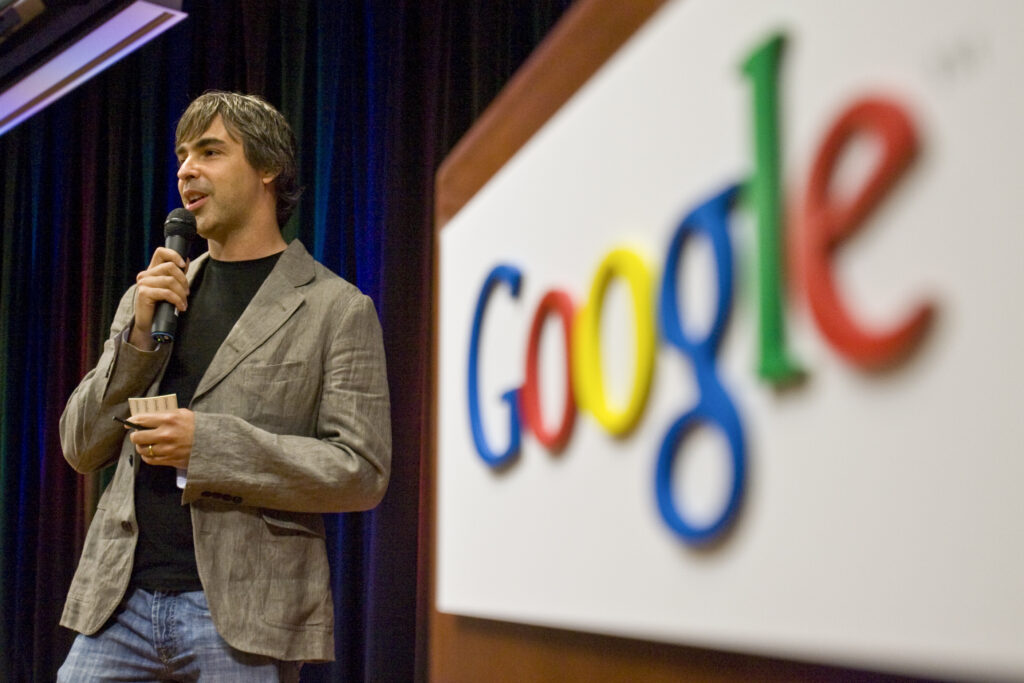
Google Guys Say Bye to California






